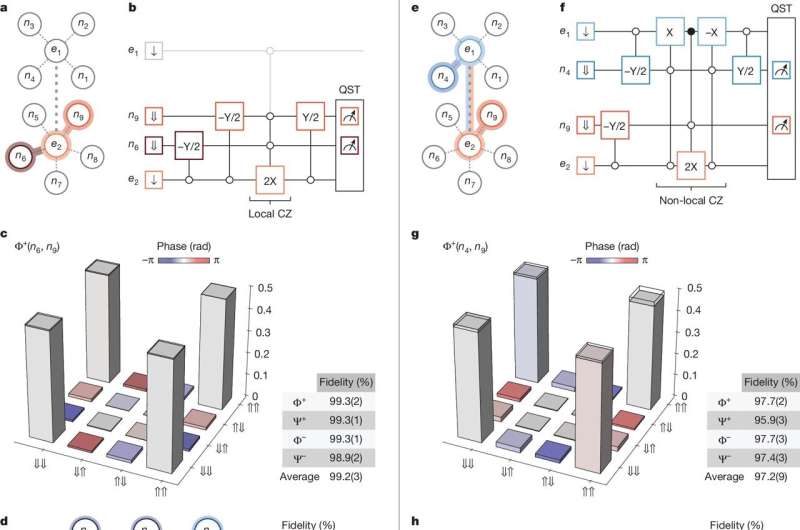In order to scale quantum computers, more qubits must be added and interconnected. However, prior attempts to do this have resulted in a loss of connection quality, or fidelity. But, a new study published in Nature details the design of a new kind of processor that overcomes this problem. The processor, developed by the company Silicon Quantum Computing, uses silicon—the main material used in classical computers—along with phosphorus atoms to link 11 qubits.
The new design uses precision-placed phosphorus atoms in isotopically purified silicon-28, which are arranged into two multi-nuclear spin registers. One register contains four phosphorus atoms, while the other contains five, and each register shares an electron spin. The two registers are linked by electron exchange interaction, allowing for non-local connectivity across the registers and 11 linked qubits.
Because of the placement of silicon and phosphorus in the periodic table, the design is referred to as the “14|15 platform.” This 11-qubit atom processor in silicon is the largest of its kind to date, marking a major accomplishment for quantum computing.









